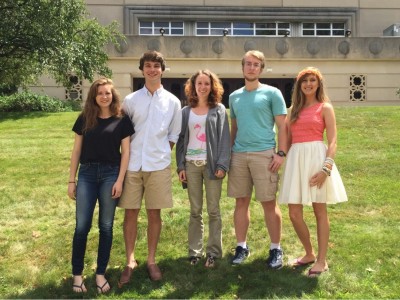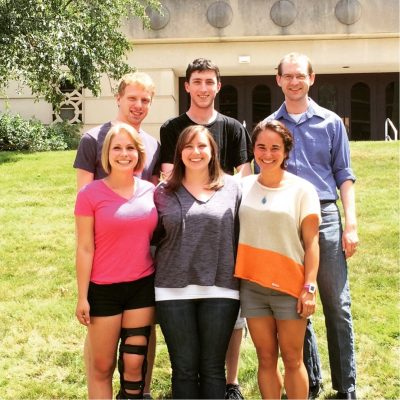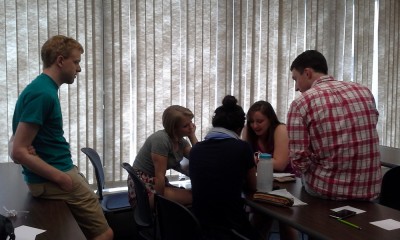Author: anb06004
Investigating the Interplay of Argumentation and Mathematics in Classroom Tasks
Group Members
Supervisors
Steven Lemay
Overview
This project was motivated by the current emphasis on argumentation in the Common Core State Standards for Mathematics. In particular, we focused on tasks that address the third standard for Mathematical Practice that highlights argumentation as an expertise all students should develop. Our data consists of 157 tasks from 40 elementary and high school teachers participating in a professional development program focused on mathematical argumentation. We analyzed how argumentation affects the cognitive demand levels of the tasks, as well as how argumentation detracts or contributes to the mathematical content in the tasks. Our findings show a change in cognitive demand levels when tasks were analyzed with and without the argumentation component. In addition, five different themes emerged from our analysis with regards to the interplay of argumentation and mathematical concepts, some of which were common across elementary and high school tasks.
Presentation
Mathematics and Intercultural Competence in the Middle School
Mathematics and Intercultural Competence in the Middle School
Group Members
Supervisors
Kyle Evans
Overview
As today’s world becomes increasingly globalized, there exists a greater need to develop intercultural competence (ICC) in children through education. Three interdisciplinary units were designed by graduate students at UConn in the past year to develop ICC in sixth grade students, but lack assessment tools that track this development over the course of a school year. With a focus on Michael Byram’s model of ICC, we created two assessment tools – a survey and a rubric. The survey contains Likert scale items measuring four dimensions – attitudes towards cultures, knowledge of cultures, mathematics learning, and interdisciplinary learning – along with open-ended questions to add a qualitative component for each dimension. The rubric, designed for teachers, provides a resource for evaluating ICC in students’ interactions and written reflections. The tools have the potential to form a new baseline for assessment of ICC in children and can be refined and adapted for use across school districts and grade levels. In addition, we created three examples of lesson plans – one for third grade, one for sixth grade, and one for ninth grade – that demonstrate how intercultural competence and global issues can be incorporated across different levels of student development while also adhering to the Common Core State Standards for Mathematics.
Presentation
Wave Propagation through a Fractal Medium
Minimal Length Maximal Green Sequences and Triangulations of Polygons
Publication: Journal of Algebraic Combinatorics volume 44, pages 905–930 (2016)
Project
Minimal Length Maximal Green Sequences and Triangulations of Polygons
Minimal Length Maximal Green Sequences and Triangulations of Polygons
Group Members
Emily Cormier, Peter Dillery, Jill Resh, John Whelan
Supervisors
Overview
Maximal green sequences (MGS’s) are combinatorial objects that involve local transformations of directed graphs, also called quivers. We studied minimal length MGS’s for quivers of type A. It is know that such quivers are in bijection with triangulations of polygons. Moreover, these local transformations of quivers behave well under this correspondence, and there is a related notion of mutation of triangulations. This enabled us to study MGS’s both in terms of quivers and in terms of triangulations. We showed that any minimal length MGS has length n+t, where n is the number of vertices in the quiver and t is the number of 3-cycles. We also developed an algorithm that yields such sequences of minimal length.
Journal of Algebraic Combinatorics volume 44, pages 905–930 (2016)
Presentation
Power Dissipation in Fractal AC Circuits
Publication
Joe P Chen8,1, Luke G Rogers9,2, Loren Anderson3, Ulysses Andrews2, Antoni Brzoska2, Aubrey Coffey4, Hannah Davis3, Lee Fisher5, Madeline Hansalik6, Stephen Loew7
Published 14 July 2017 • © 2017 IOP Publishing Ltd
, , Citation Joe P Chen et al 2017 J. Phys. A: Math. Theor. 50 325205

